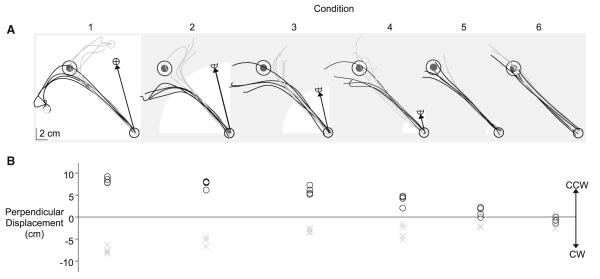Fig. 3.
Experiment 1. a Hand paths of corrective responses to clock-wise (black) and counterclockwise (gray) rotations for each condition from a representative subject. The cursor exposure window (white), the cursor path direction for clockwise rotations (black arrow), and the position the finger would need to terminate in order to bring the cursor to the target center (open gray circle) are shown for reference. b Perpendicular finger displacements of the clockwise (black) and counterclockwise (gray) rotation trials for each condition in Fig. 3a. Negative perpendicular displacements indicate responses that were directed clockwise (CW), while positive values indicate responses that were directed counterclockwise (CCW)

